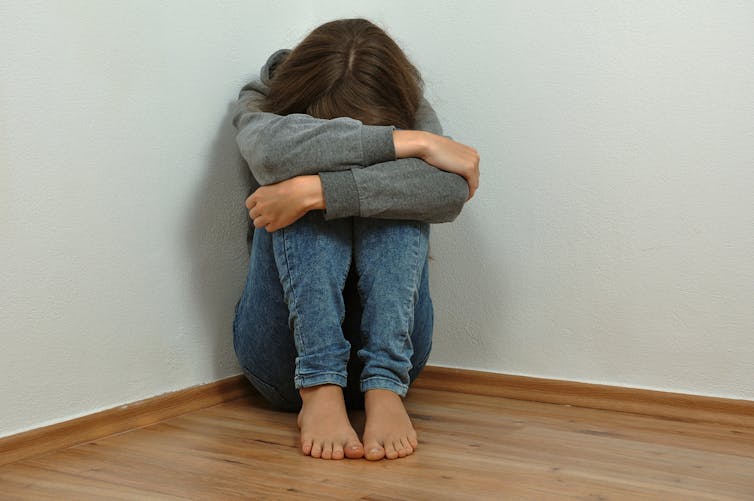
Natalia Lewis, University of Bristol
Around one in five children in the UK have been exposed to domestic violence or abuse between their parents or caregivers. When adults are involved in an abusive relationship, their children bear the consequences.The effects of domestic violence on a child can range from emotional and behavioural problems to physical injury and death when children are caught up in the violence between adults.
Even when not directly involved, children’s exposure continues through witnessing and being aware of the violence – and through its health, social and financial consequences.
Health and social care workers are often the first professionals to have contact with a child experiencing these situations. This could be when the abused parent seeks help, or when children undergo health checks. It can happen during assessments for emotional or behavioural problems, or when social services, a child’s school or the police become involved.
The World Health Organisation (WHO) recommends that health professionals who see women with clinical signs of domestic violence should ask them about safety in their relationship and at home. They advise that responses to disclosure should follow what is known as the “LIVES” principles: Listen, Inquire about needs and concerns, Validate, Enhance safety, and provide Support.
But there are no equivalent recommendations for children, and there is no agreed approach regarding how best to identify and respond to children who are exposed to domestic violence. So far, there has also been only limited evidence on which to base future guidance.
Now researchers at universities in the UK (Bristol, Queen Mary and Cambridge) and Canada (McMaster and Western) have combined existing evidence on the best ways to identify and respond to children experiencing domestic violence. This synthesis, the first of its kind, integrates findings from 11 studies with 42 children, 220 parents, and 251 health care and social services professionals.
We found that study participants’ opinions were strikingly consistent, and matched the LIVES principles. Children, parents (mostly mothers) and professionals agreed that identification of the problem should happen in the context of a good patient-professional relationship, and in a safe and supportive environment.
Health care professionals should enquire about the child’s safety when they see clinical signs of domestic violence and abuse in children. The ideal initial response should include emotional support, discussion about domestic violence and advice on local specialist services.
We also discovered that a professional’s ability to identify and respond to children’s exposure to domestic violence was heavily influenced by constraints within the health and social service system. Lack of time, funding cuts and poor inter-agency collaboration all have an impact. Professionals needed more training and resources to be able to respond to these children and their families in an appropriate and safe way.
However, there was a difference of opinion when it came to engaging directly with children and managing their safety.
A direct approach?
Children and mothers wanted professionals to talk to children directly and engage them in safety planning. Professionals, on the other hand, preferred to engage with children via the parent – and did not perceive children exposed to domestic violence as patients or clients in their own right. Also, professionals were not happy with existing safety guidelines and practices for children and mothers exposed to domestic violence. These elements are certainly subjects for future research and training.
Given the scale of the problem, and the long-term emotional, behavioural and physical impacts on children, we hope that the results of this study can form the basis of new, internationally agreed guidelines.
Our research findings have already been used to inform point-of-care responses to adults and children in Canada’s VEGA (Violence, Evidence, Guidance, Action) Project. That program is already developing the “Recognising and Responding Safely to Family Violence” Handbook for health and social care professionals.
![]() And we hope our evidence will inspire development of professional training and resources elsewhere – so that front line practitioners feel better equipped to appropriately and safely respond directly to the needs of children. Too many children’s lives and futures could depend upon it.
And we hope our evidence will inspire development of professional training and resources elsewhere – so that front line practitioners feel better equipped to appropriately and safely respond directly to the needs of children. Too many children’s lives and futures could depend upon it.
Natalia Lewis, Research Fellow in Primary Care, University of Bristol
This article was originally published on The Conversation. Read the original article.
